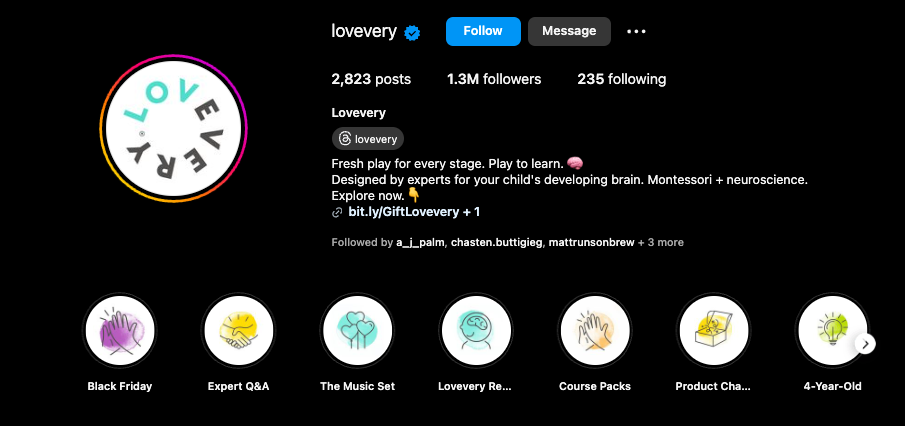
Want to learn how to write an elevator pitch that is effective and makes an impact? You have the learn the best.
The story of the world’s most effective elevator pitch begins in 1983, when Return of the Jedi was dominating the box office and people couldn’t stop listening to Uptown Girl by Billy Joel.
The president of Pepsi at that time was a phenom named John Sculley, who was known for bold moves and embraced innovation more than any of his predecessors. Steve Jobs, who had an unparalleled eye for greatness, decided Sculley was the CEO that would take Apple Computers to the next level. As Jobs envisioned it, Sculley could bring his ample talents to running the company while Jobs poured his efforts into developing the next big thing.
But Sculley had no intention of leaving his stellar job at Pepsi. He told this to Jobs in their first face-to-face meeting, undeterred, Jobs prophesied that Apple would become the world’s preeminent technology computer. Sculley respected the vision and tenacity of Jobs, but held his ground.
In the following months, Jobs continued to reach out to Sculley. The position at Apple was undeniably intriguing, and the compensation kept reaching higher as Jobs greenlit the most aggressive offers possible.
Still, no dice. Sculley was happy where he was. But Jobs had one more card to play. He arranged a final meeting with Sculley in New York City. Sitting across the table from the future CEO of Apple Computers, Jobs didn’t argue or plead. He used an elevator pitch. To many experts, it was the elevator pitch.
“Do you want to spend the rest of your life selling sugared water,” asked Jobs, “or do you want a chance to change the world?”
Table of Contents
What Is an Elevator Pitch?
How to Write an Elevator Pitch
How to Write a Digital Elevator Pitch
Tips for Improving Your Elevator Pitch
What Is an Elevator Pitch?
An elevator pitch is a concise story of your business, idea, or brand verbally spoken in the amount of time it takes to ride an elevator. An elevator pitch aims to persuade the listener about who you are and what you do.
As a consultant, freelancer, entrepreneur, or early-stage founder, it’s essential that you know how to write an elevator pitch for yourself. Because no one else is going to do it for you. As demonstrated by the formidable Jobs, an elevator pitch is a powerful statement that has been consolidated to its purest form.
An elevator pitch is a concise story of your business, idea, or brand in the length of an elevator ride.
If you can’t deliver your personal pitch in less than 25 seconds, it probably doesn’t deserve to be called an elevator pitch, because the idea is that you could use it during a quick encounter in an elevator. If you’re still talking when the doors open and your audience exits the elevator, you’ve failed your mission.
Elevator pitches are effective for business opportunities, as the Apple example illustrates. They can also be tied to specific products or services. For example, here’s how Airbnb describes its services:
Most tourists booking online care about price—and hotels are one of the highest costs when traveling. On the other hand, platforms like Couchsurfing have proven that over half a million people are willing to lend their couches or spare bedrooms.
We have created a platform that connects travelers with locals. Letting them rent our rooms, or even entire places. Travelers save money and locals can monetize their empty rooms. We just take a 10% commission.
This elevator pitch looks like War and Peace compared to the epic one-liner used by Steve Jobs, but it’s still a premium example of how to fit a collection of important elements into a small package. Let’s analyze this pitch to see why it’s so effective.
It opens with a pain point for travelers: the price of hotels
It uses Couchsurfing as evidence that travelers are seeking alternatives to hotels
It positions its services in the space between expensive hotels and the primal nature of sleeping on a couch
It showcases the benefits of travelers saving money and locals being able to make extra cash.
It shows how Airbnb is profiting from the service, which instills confidence in the company’s sustainability
In the hands of a novice, this information might have been laid out in a large brochure. And, as we all know, nobody reads brochures. The brightest minds from Airbnb realized that if they wanted to state their case in a way that would get noticed, they’d need to put it into an elevator pitch.
Elevator pitches like this one from Airbnb can be used in multiple ways. For example, the founders might’ve leveraged it to secure a loan in the early stages of the game. Salespeople could reference it when setting up partnerships with other brands. And a slightly modified version of this pitch would be right at home on Airbnb.com, where it could help visitors understand the company’s purpose and vision.
How to Write an Elevator Pitch In 6 Steps
You are a talented professional. Your services are distinct and your results are noteworthy. The trick will be to create an elevator pitch that shares these facts in a clear and compelling way.
Let’s break down the components required for a great elevator pitch template.
Step 1: Name the Objective
Anytime word count is limited, your objective takes on a heightened level of importance. So what is the key purpose for this pitch? Is it to explain to strangers what you do for a living? Or is it to persuade a potential client that you are the answer to their problems?
For example, let’s say that you’re a consultant. Every year when you gather with extended family members over the holidays, you’re asked about your job. Are you sick of trying to explain to your aunts and uncles what a consultant does? An elevator pitch would enable you to lay it out in the simplest terms possible, allowing you to then quickly duck out of the conversation and go get some food from the buffet table.
This educational-style pitch could also be used with college friends, neighbors, or strangers on a plane. But it would be wasted on a potential client. For that scenario, you’d want to ditch the explanations and deliver a pitch that zeros in on your abilities and how they’ll benefit the client.
For the purpose of this guide, we’ll focus on client pitches from here on out, as they’re the most important for your career.
Don’t Skip: How to Start a Startup (Advice from Those Who’ve Done It)
Step 2: Justify Your Existence
Why do you do what you do? For Steve Jobs, his goal was to change the world. Airbnb is all about connecting travelers with locals.
So what gets you out of bed in the morning? It’s often helpful to state a problem, then position yourself as the solution. Travelers want affordable places to stay, so Airbnb provides a non-couch, non-hotel option.
If you’re a freelance writer, you might talk about the glut of content bombarding people these days. In a world where words mean less than ever, you cut through the clutter with messages that connect. In fact, your writing is so effective that it doesn’t just get noticed, it actually prompts readers to lean in a little closer.
Step 3: Reveal Your Secret Ingredients
It’s one thing to say that your writing is better than the rest, but you’ll also need to back it up. This is where your unique selling proposition comes into play.
Perhaps the reason your writing is so powerful is because you have done extensive research into persona-based strategy. These insights help you to expertly target your words.
Or maybe you’re a natural storyteller, which enables you to share messages in a natural way that engages people and connects with their emotions.

Step 4: Consider the Call to Action
What do you want your audience to do once you’ve delivered your pitch? The specific actions might vary depending on the context, but there should always be a drive toward action.
If you are a freelance graphic designer, your pitch might highlight the distinct ways you approach your craft and how your talents benefit clients. The pitch becomes more personal and powerful, however, if you direct it toward the audience. Here’s a generic version:
“My UX-focused design style ensures that customers not only know how to navigate websites, but are able to engage with them in a meaningful way.”
And here’s a version that’s greatly improved with only the slightest bit of tailoring:
“My UX-focused design style ensures that your customers not only know how to navigate your websites, but are able to engage with them in a meaningful way.”
Depending on your strategy going into the conversation, you might follow up this personalized statement with a direct call to action such as, “Let’s work together to make sure your websites are working as hard and intelligently as the rest of your team is.” Or you could have a more direct question such as, “Can I set up a 30-minute meeting so we can discuss in more detail how we can make this possible?”
Step 5: Refine the Structure
Once you’ve compiled all the necessary elements, it’s time to give the right form to your pitch. This will be your chance to experiment with how you order the lines and decide which words receive emphasis.
Writers are often told to “kill your darlings,” which means that any unnecessary details or element needs to be trimmed from a piece. The same idea applies here. Just because an elevator pitch can be 25 seconds long doesn’t necessarily mean that it should be. That epic pitch from Steve Jobs to John Sculley probably lasted less than 6 seconds.
Step 6: Internalize It
The best elevator pitches are shared from a combination of memory and heart. You’ll want to memorize the words of your pitch so you can summon them at any moment. But recitations will only get you so far.
Your pitch should also convey your passion. You should be able to express the words in a natural and believable way. The precise phrasing should vary each time you share it, customized to the person you’re speaking to.
To attain this level of mastery, you’ll need to practice your pitch. Speaking it out loud will always help you streamline it, as certain words and phrasing will look great on paper, but come out awkwardly when verbalized.
Put a recurring reminder in your calendar to revisit your personal elevator pitch at least once a quarter. During this brief session, you can make any necessary tweaks and ensure that the words are still effortless to share.
As an added bonus, practice your personal pitch anytime that you’re in an elevator by yourself. Not only is this an ode to the pitch’s origins, but it will help you confirm that your pitch is succinct enough for a ride up to the 10th floor.
How to Write a Digital Elevator Pitch
Let’s face it. The days of running into a potential investor in the elevator of an office park are gone. No matter the industry, you’ll need to have an online presence that quickly explains your business or brand in one or two sentences. The typical digital real estate for an elevator pitch online is your homepage, search metadata, and social media bios. Let’s take a look at how to write a effective digital elevator pitch.
Be Clear About the Problem You Solve
Let’s look at the web security company Cloudflare. On their homepage, they’ve defined the problem they solve (regaining control and protecting) while showcasing where they stand out (connectivity everywhere).

Express Your Brand Identity
Elevator pitches shouldn’t just be cold, hard facts when you’re competing for eyeballs online. Check out early-childhood development brand Lovevery’s Instagram bio. They proudly display their brand language, “Fresh play for every stage. Play to learn.” while including what makes them unique, such as “Montessori + neuroscience.” Plus, the best part about an online elevator pitch is that you can use emojis 😉

Provide Context
If you pitch in person, someone listening might have context for who you are because you’re at the same conference, they know your sister-in-law, or you have a name tag on. But online, people need to know the context of your expertise. Marketing savant, founder, and podcast host Amy Porterfield gives an unfamiliar audience context of what she does in her LinkedIn “About” section. Her pitch helps frame the context for the content and information she shares online.

Include Keywords
While fancy words and clever rhyming might work in an in-person pitch, your elevator pitch online must include keywords. Supergoop! is an SPF skincare brand, and their Google search listening is packed with keywords potential customers are searching for like “SPF,” “best skincare,” “sunscreen,” “UV protection,” and “suncare.” While it may not be overly creative, the pitch is concise and full of search terms that will make them top of the listings.

Keep Learning: Find a Business Partner Who’ll Help (Not Hurt) Your Business
Tips for Improving Your Elevator Pitch
While there are certain components that nearly all elevator pitch templates should include, there are countless ways to personalize your pitch and bring it to life. Here are 3 quick tips for keeping your pitch as limber as it is memorable.
Balance the Timing and Word Count: It’s tempting for entrepreneurs to want to pack as much promotion into an open space as possible. But don’t let the 25-second limit be the ultimate guide to your pitch. During practices, pay attention to how quickly you’re speaking. You might need to trim additional words in order to give your pitch some breathing room.
Keep it Fresh: Your perfect elevator pitch from 2019 simply won’t cut it this year. The world has changed, business has changed, and most importantly, you have changed. So don’t let grass grow under your pitch. If you haven’t updated it in the past 6 months, it’s probably time you got started.
Add One More Variation: Remember how your pitch should be tailored for different situations? Each time you revisit your pitch, think about one additional context that it might be used for. Then take the time to come up with the distinct elements that would help it make a splash.
If you’d like to get more expert tips on how to build your brand, visit our library of free training courses. From financing strategies to social media insights to revenue-boosting strategies, these courses can help you deliver on the great promise of your elevator pitch.








